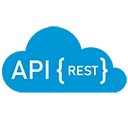Caching is a technique used to store frequently accessed data in a temporary storage area, allowing for faster retrieval and reduced load on the underlying data source. By caching data, applications can improve performance, decrease latency, and reduce the number of requests made to databases or external services. In ASP.NET Web API, caching can be implemented at various levels, including in-memory caching, output caching, and distributed caching.
Types of Caching
- In-Memory Caching: Stores data in the memory of the application server. This is fast but limited to the server's memory and is not shared across multiple instances.
- Output Caching: Caches the response of a specific action method, allowing subsequent requests for the same resource to be served from the cache.
- Distributed Caching: Uses an external caching mechanism (like Redis or Memcached) to share cached data across multiple servers or instances, providing scalability and reliability.
Implementing Caching in ASP.NET Web API
Below are the steps to implement caching in an ASP.NET Web API application using in-memory caching and output caching.
Step 1: Install Required NuGet Packages
If you want to use distributed caching, you may need to install additional packages. For example, to use Redis, you can install the following package:
Install-Package Microsoft.Extensions.Caching.StackExchangeRedis
Step 2: Configure Caching in Startup
In the Startup.cs file, configure the caching services in the ConfigureServices method:
using Microsoft.Extensions.DependencyInjection;
public class Startup
{
public void ConfigureServices(IServiceCollection services)
{
services.AddControllers();
services.AddMemoryCache(); // Add in-memory caching
// services.AddStackExchangeRedisCache(options => { /* Configure Redis */ });
}
public void Configure(IApplicationBuilder app, IWebHostEnvironment env)
{
app.UseRouting();
app.UseEndpoints(endpoints =>
{
endpoints.MapControllers();
});
}
}
Step 3: Using In-Memory Caching
You can use the IMemoryCache interface to store and retrieve cached data in your controllers. Below is an example of how to implement in-memory caching in a ProductsController:
using Microsoft.AspNetCore.Mvc;
using Microsoft.Extensions.Caching.Memory;
using System.Collections.Generic;
[Route("api/[controller]")]
[ApiController]
public class ProductsController : ControllerBase
{
private readonly IMemoryCache _cache;
public ProductsController(IMemoryCache cache)
{
_cache = cache;
}
// GET api/products
[HttpGet]
public IActionResult Get()
{
const string cacheKey = "productList";
if (!_cache.TryGetValue(cacheKey, out List<string> products))
{
// Simulate data retrieval from a database
products = new List<string> { "Product1", "Product2", "Product3" };
// Set cache options
var cacheEntryOptions = new MemoryCacheEntryOptions()
.SetSlidingExpiration(TimeSpan.FromMinutes(5)); // Cache for 5 minutes
// Save data in cache
_cache.Set(cacheKey, products, cacheEntryOptions);
}
return Ok(products); // Return cached or newly retrieved data
}
}
Step 4: Using Output Caching
Output caching allows you to cache the response of an action method. You can use the [ResponseCache] attribute to specify caching behavior. Below is an example:
using Microsoft.AspNetCore.Mvc;
[Route("api/[controller]")]
[ApiController]
public class ProductsController : ControllerBase
{
// GET api/products
[HttpGet]
[ResponseCache(Duration = 60)] // Cache the response for 60 seconds
public IActionResult Get()
{
var products = new List<string { "Product1", "Product2", "Product3" };
return Ok(products); // Return cached response
}
}
Conclusion
Caching is a powerful technique to enhance the performance of ASP.NET Web API applications. By implementing in-memory caching, output caching, or distributed caching, you can significantly reduce response times and server load. Understanding the different types of caching and how to implement them effectively will help you build more efficient and scalable web applications.

